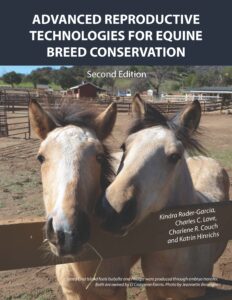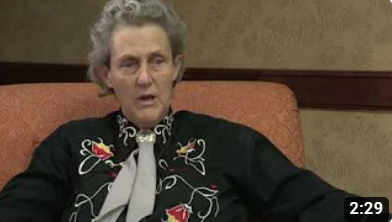 The Livestock Conservancy has published a new edition of Advanced Reproductive Technologies for Equine Breed Conservation. Veterinary health providers and owners of endangered horse and donkey breeds can use this manual to become familiar with the numerous options available for saving important genetics.
The Livestock Conservancy has published a new edition of Advanced Reproductive Technologies for Equine Breed Conservation. Veterinary health providers and owners of endangered horse and donkey breeds can use this manual to become familiar with the numerous options available for saving important genetics.
The authors provide detailed instructions for collecting, storing, and using sperm, oocytes, embryos, and tissues from live and recently deceased animals. This edition also contains a set of Emergency Instruction Sheets for use when time is critical. An expanded Resource List offers contact information for reproduction and tissue preservation laboratories and links to supporting educational articles and videos.
The new edition also contains the following:
-
-
-
-
-
-
-
-
-
- A list of 31 rare horse and donkey breeds and their current endangerment status on The Livestock Conservancy’s Conservation Priority List
- Directions for harvesting testes for epididymal sperm retrieval and ovaries for egg retrieval
- Methods for packaging and shipping testes, ovaries, and skin tissue samples
- Contact information for several laboratories that provide Advanced Reproductive Technologies (ART) for extraction of epididymal sperm, collection of oocytes, or processing of skin samples
-
-
-
-
-
-
-
-
Spiral bound copies of the 59-page resource are available from The Livestock Conservancy online store. As a service to the heritage breed community, a PDF version of the manual is available for free download. The new edition was made possible by a generous gift from El Campeon Farms and the Foundation for Horses and Other Animals. The manual will be widely promoted among equine health, breed, and conservation organizations.
“New discoveries in genetic technology offer almost unimaginable promise in ways to preserve the genetic diversity of living organisms and have a special place in the effort to save endangered animals. However, if we do not have the genetic tissues of the organisms to apply these new genomic technologies then the battle is lost. This manual by Drs. Hinrichs and Couch provides the information that the people in the field or clinics have long needed to preserve biological materials that could make the difference in whether or not a species or breed avoids extinction and sticks around to enrich the lives of humanity. A companion like this has long been needed and to get a volume of this quality by true experts is a unique blessing.” Dr. E. Gus Cothran, Texas A&M University
Kindra Rader-Garcia is the Owner and Chief Operating Manager of Vita Nova Reproduction Center. Charles C. Love, DVM, Ph.D., is a Professor in the Department of Large Animal Clinical Sciences at the Texas A&M College of Veterinary Medicine and Biomedical Sciences. Charlene R. Couch, Ph.D., is a Senior Program Manager at The Livestock Conservancy. Katrin Hinrichs, DVM, Ph.D., is Chair of the Department of Clinical Studies-New Bolton Center at the University of Pennsylvania School of Veterinary Medicine.
The Livestock Conservancy is a national nonprofit membership organization working to protect more than 190 breeds of livestock and poultry from extinction.



